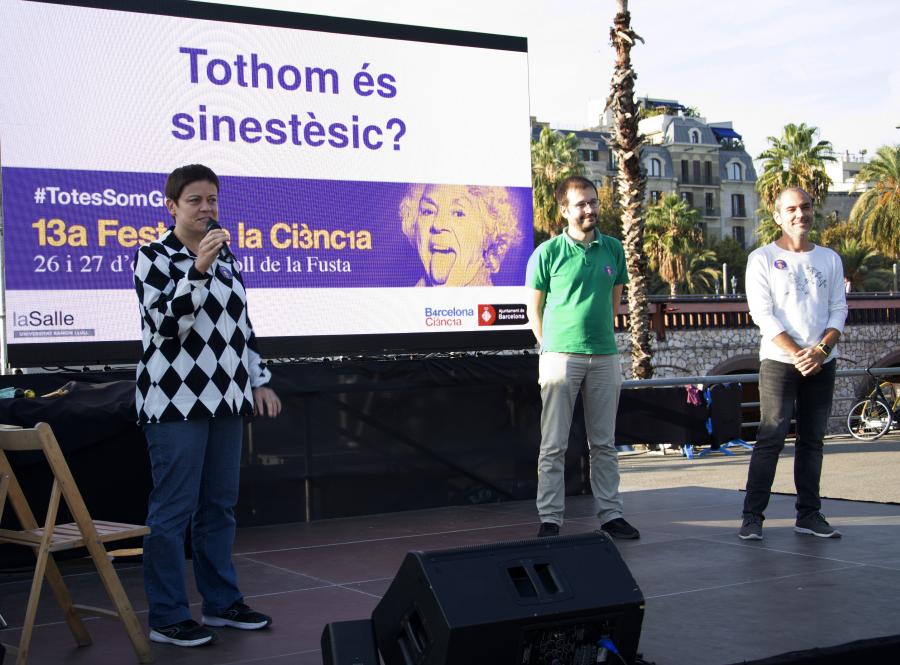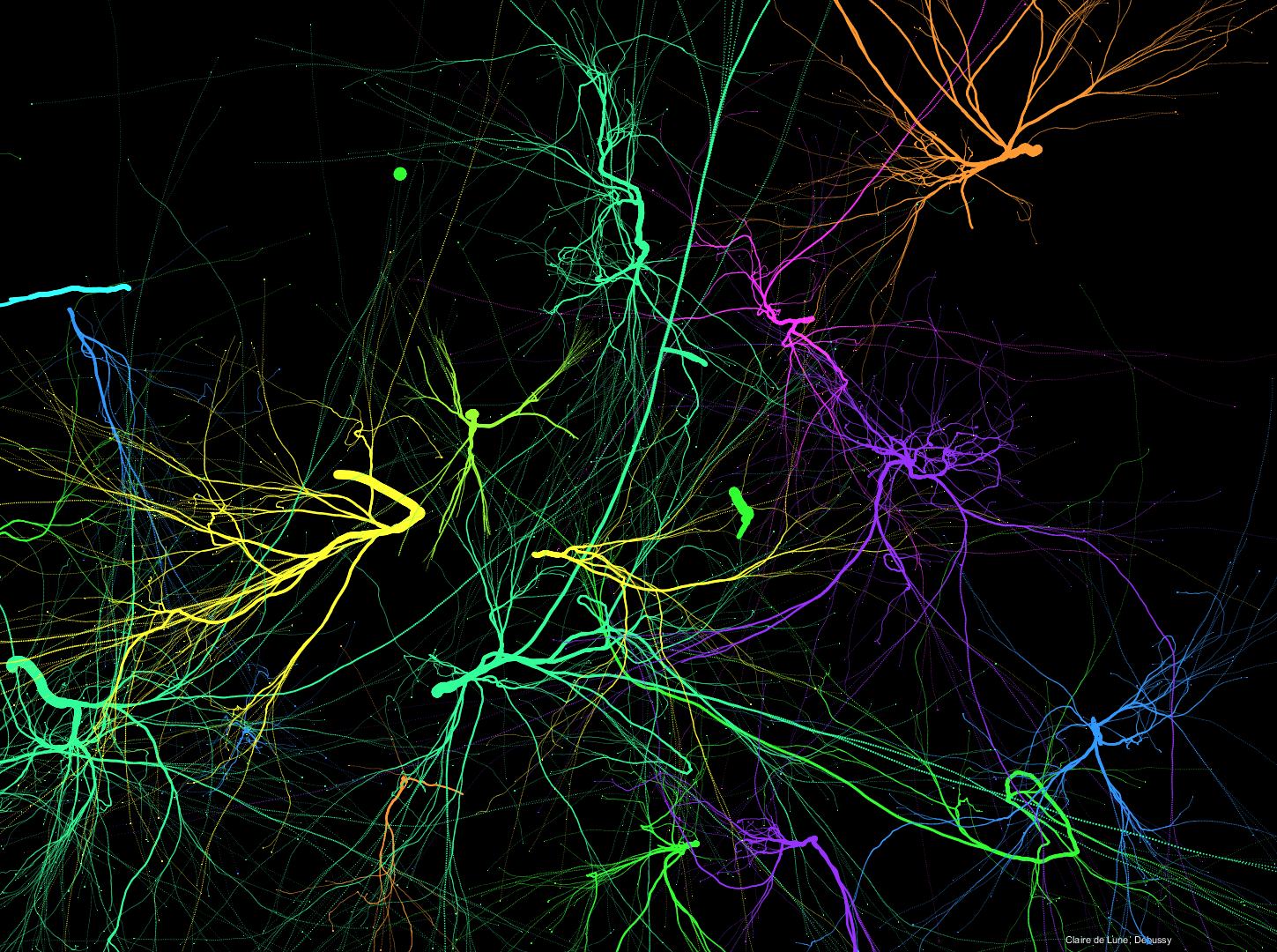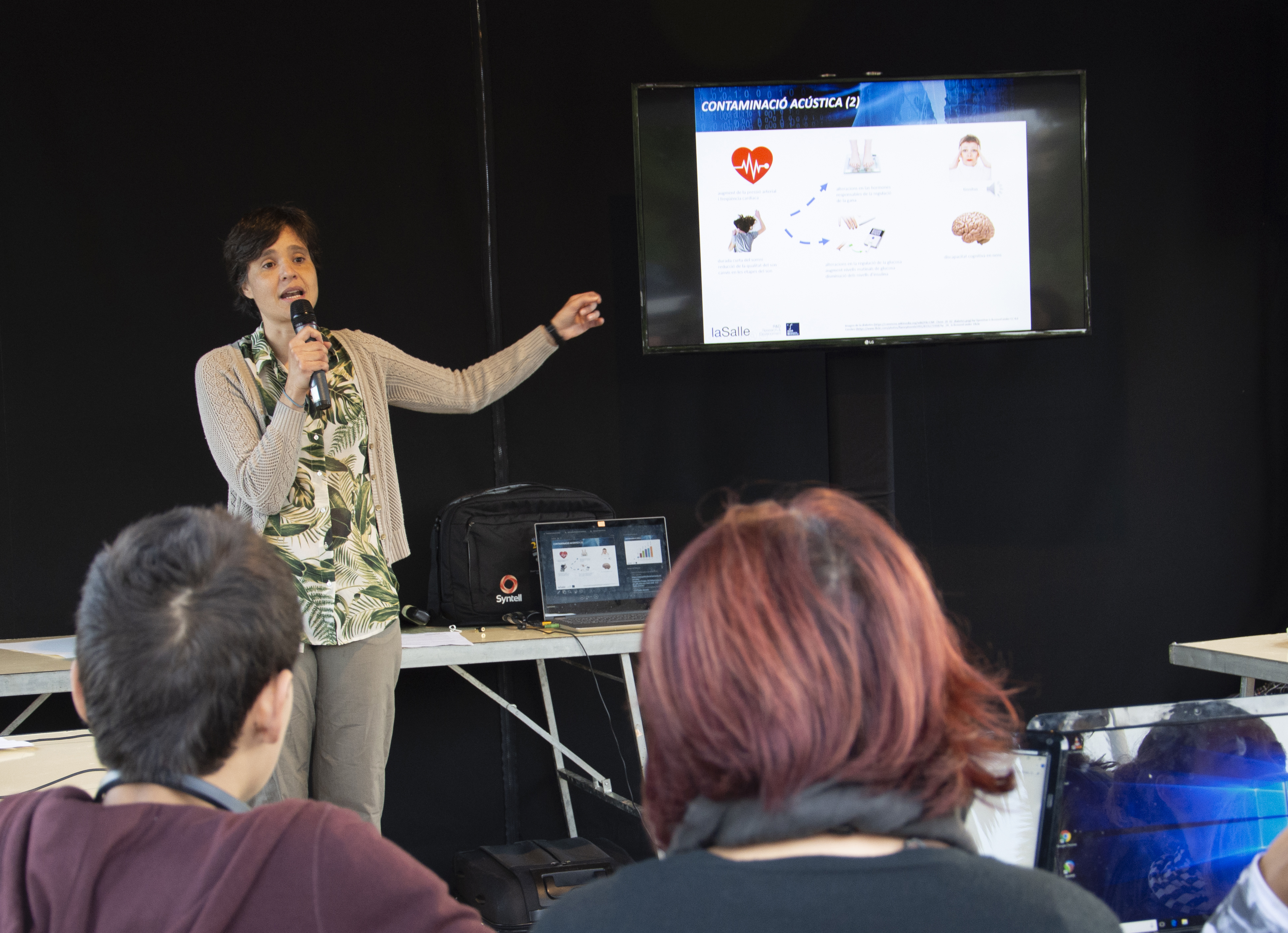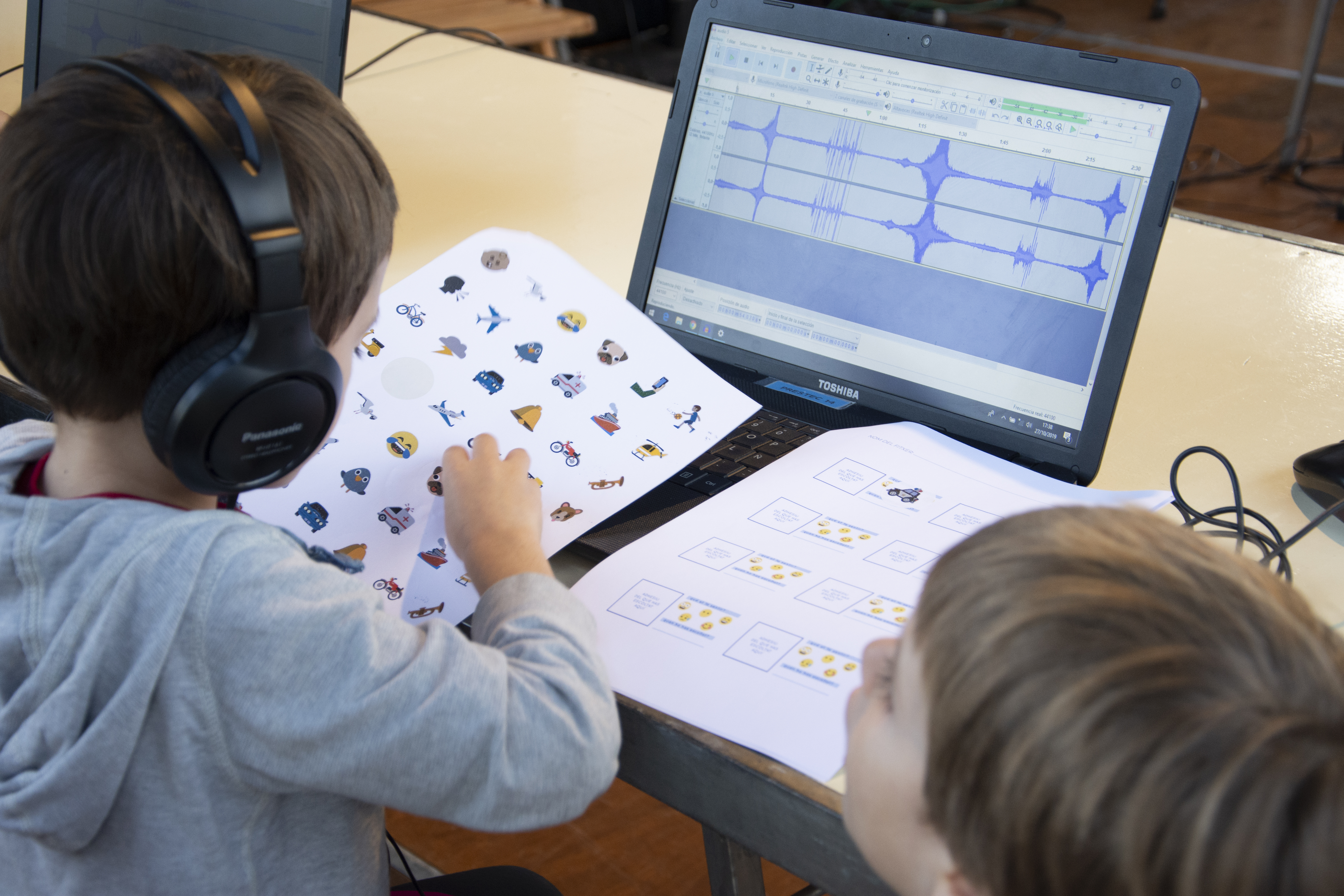GTM Participates on the 13th Barcelona Science Festival!

The first one, named “Are we all synesthetic?”, was led by Dr. Xavier Sevillano, Marc Freixes and Dr. Rosa Alsina. The researchers presented Musical Vision and Sound Neurons. The former is a software tool developed by Dr. Xavier Sevillano and student Antonio Polo, capable of converting images into music by mimicking several aspects of the human visual system. The latter was developed by Dr. Victor Saenger and Marc Freixes inspired in neurons and in the synesthesia between musical notes and colors. Sound Neurons can draw neuron forests according to an audio input in real time. The size and the growth rate of the neurons is controlled by the sound intensity and their color depends on the pitch.
Children attending the activity were invited to “Paint and make music!”. They were given crayons and drawing paper to create their own paintings. After that, each painting was converted into music by means of Musical Vision. Children also had opportunity to “paint” neuron forests by singing, screaming and playing several instruments, as a flute, whistles and some percussions.

They were excited to realize that thanks to Musical Vision and Sound Neurons they had become twofold artists: painters and musicians!
Check out some of the beautiful artwork that they produced:


The second activity, called “How does the acoustic contamination affect us?”, led by Dr. Leticia Duboc and Dr. Rosa Alsina was part of the SmartSense project (Scalable & sustainable Smart City Services). The researchers explained what is sound and how to measure it, talked about how urban noise can affect our health, and presented SmartSound, a technology that use artificial intelligence to identify the source of noise automatically. Among other applications, Smartsound is currently being used to distinguish traffic noise from other types of urban sounds for the construction of strategic noise maps in big cities. Such distinction gives city administrations more precise information to address the problem of acoustic contamination, as well as others.


Of course, we also had a lot of fun. Our little scientists:
-
Guessed the decibel levels of different urban sounds and were spot on!
-
Tagged urban noise to train SmartSound using individual laptops, headphones, the Audacity software and fun stickers, just like our researchers do on their day-to-day. OK, we don’t really get the fun stickers... why not?!?
-
Drew incredibly beautiful neurons with their voice using the Sound Neurons software; and
-
Did a shouting competition measured with sound level meters.
What a fun day!!!


